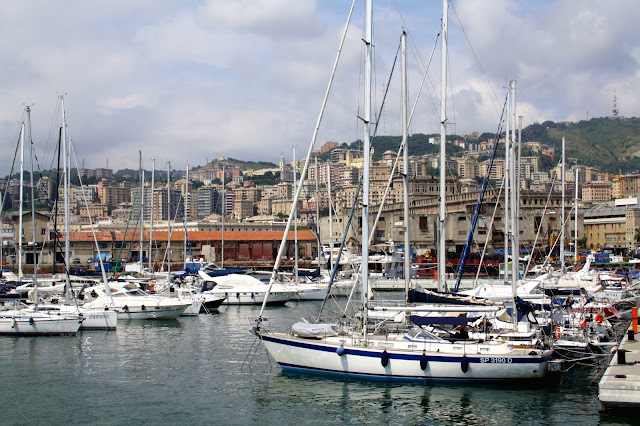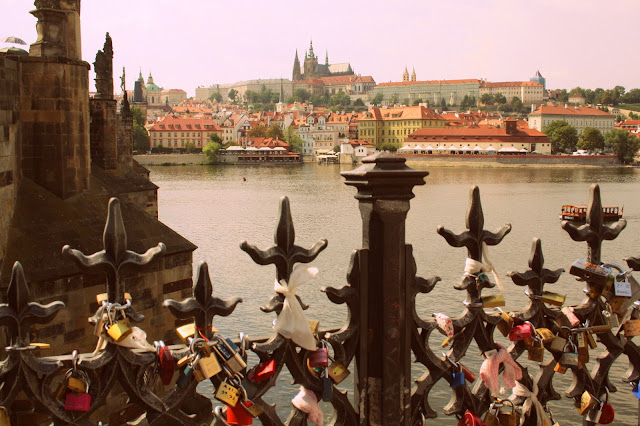"Mediolan jest imponujący" – Lord Byron w Mediolanie/ "Milan is striking” – Lord Byron in Milan
„Mediolan jest imponujący – katedra wspaniała – całe miasto
przypomina mi Sewillę, choć jest trochę gorsze” – pisał Lord Byron w liście do
Johna Murraya wkrótce po przyjeździe do Mediolanu. Poeta spędził tu trzy
tygodnie. Przyjechał ze Szwajcarii 12 października 1816 roku a 3 listopada wyruszył w dalszą drogę. Towarzyszył mu przyjaciel John Cam
Hobhouse.
Hobhouse napisał w swoim dzienniku, że zatrzymali się w hotelu
Sant Marco, który najprawdopodobniej znajdował się gdzieś w pobliżu katedry.
Hotel był okropny. Postanowili
poszukać innego.
„Milan is striking – the Cathedral superb – the city
altogether reminds me of Seville – but a little
inferior” – Lord Byron wrote to John Murray shortly after arriving in Milan
Hobhouse wrote in his journal, that they have
stayed at the Hotel Sant Marco, which was probably located somewhere near the
cathedral. The hotel was awful. They decided to look for another one.
Pierwszą atrakcją jaką napotkali przy wjeździe do miasta był
łuk triumfalny. Budowę Arco della Pace rozpoczęto w 1807 roku na polecenie
Napoleona. Podczas wizyty Byrona budowla nie była jeszcze ukończona i częściowo
osłaniały ją rusztowania. Byron wspomina o nim w liście do Augusty: „W pobliżu
Mediolanu stoi nieukończony łuk triumfalny – dla Napoleona – tak piękny, że żal
ściska z powodu jego niekompletności”. Budowę ukończono dopiero w 1833 roku.
The triumphal arch was the first
attraction they saw at the entrance to the city. The
construction of the Arco della Pace began in 1807 on the instructions of
Napoleon. During the visit of Byron, the building was not completed yet
and partly covered with scaffolding. Byron mentions it in a letter to Augusta :
“Close to Milan
Arco della Pace
Byron oczywiście zwiedził katedrę mediolańską. Chciał
przede wszystkim zobaczyć miejsce, w którym 11 lat wcześniej Napoleon koronował
się na króla Włoch. Jednak największe wrażenie zrobiły na nim relikwie świętego
Karola Boromeusza. Ciało świętego spoczywa w kryształowej trumnie, obecnie jest
ona umieszczona w krypcie pod ołtarzem katedry.
Byron of course, visited theMilan
Byron of course, visited the
Hobhouse zanotował w swoim dzienniku, że obejrzeli "Ostatnią
wieczerzę" Leonarda da Vinci w kościele Santa Maria delle Grazie. Zwiedzili także klasztor Sant'Ambrogio, w którym ich uwagę zwróciła rzeźba Matki Boskiej w kaplicy św. Marceliny,
siostry św. Ambrożego. Jednak najbardziej spodobały im się klasztorne krużganki
z fragmentami starożytnych rzeźb i inskrypcji.
Hobhouse
noted in his diary, that they had seen the "Last Supper" by Leonardo
da Vinci in the church
of Santa Maria
Sant'Ambrogio
Oglądali również starożytne rzymskie kolumny przed bazyliką
San Lorenzo (Colonne di San Lorenzo). Rząd 16 kolumn korynckich został tu umieszczony w IV wieku. W XIX wieku przestrzeń między kościołem a
kolumnami zajmowały budynki, które zostały rozebrane w 1935 roku.
They also
admired the ancient Roman columns in front of the Basilica of San Lorenzo. A row of 16 Corinthian
columns was placed here in the 4th century. In the nineteenth century, the
space between the church and the colonnade was occupied by buildings, that were
demolished in 1935.
Colonne di San Lorenzo, zdjęcie sprzed 1935 r.
Głównym miejscem spotkań śmietanki towarzyskiej Mediolanu był
teatr - przede wszystkim Teatro della Scala, ale także Teatro Re. Między innymi z tego powodu Byron i Hobhouse niemal każdy wieczór
spędzali oglądając przedstawienia w towarzystwie nowopoznanych osób m.in.
Ludovica di Breme, Silvia Pellico, Luigiego Renato Porro-Lambertenghiego oraz
Marie-Henri Beyle'a, znanego jako Stendhal. Byron spędzał z nim całe godziny
wypytując o szczegóły jego pracy jako sekretarz Napoleona.
The theatre
was the main meeting place for Milan
Teatro della Scala
Byron z Hobhousem, co najmniej dwukrotnie, odwiedzili
mediolańskie muzea - Pinakotekę Brera i Pinakotekę Ambrosiana (o wizycie Byrona w Pinakotece piszę tutaj). W Pinakotece Brera Byrona urzekł zwłaszcza jeden obraz -
„Abraham wypędzający Agar i Izmaela” namalowany przez Guercino (wł. Giovanni
Francesco Barbieri) w 1657 r.
„W Galerii malarstwa
Brera znaleźć można piękne obrazy; (...) nie znam się
na malarstwie, ale spodobał mi się Guercino – obraz Abraham odsyłającego Hagar
i Ismaela – który wydaje mi się niezwykle naturalny i doskonały.” – pisał do
Johna Murraya.
Byron and
Hobhouse visited the museums of Milan
“The Brera
Gallery of paintings has some fine pictures; (...) of
painting I know nothing – but I like the Guercino – a picture of Abraham putting
away Hagar – and Ishmael – which seems to me natural and goodly” – he wrote to
John Murray.
Guercino, “Abraham Casting Out Hagar and Ishmael”
















Komentarze
Prześlij komentarz